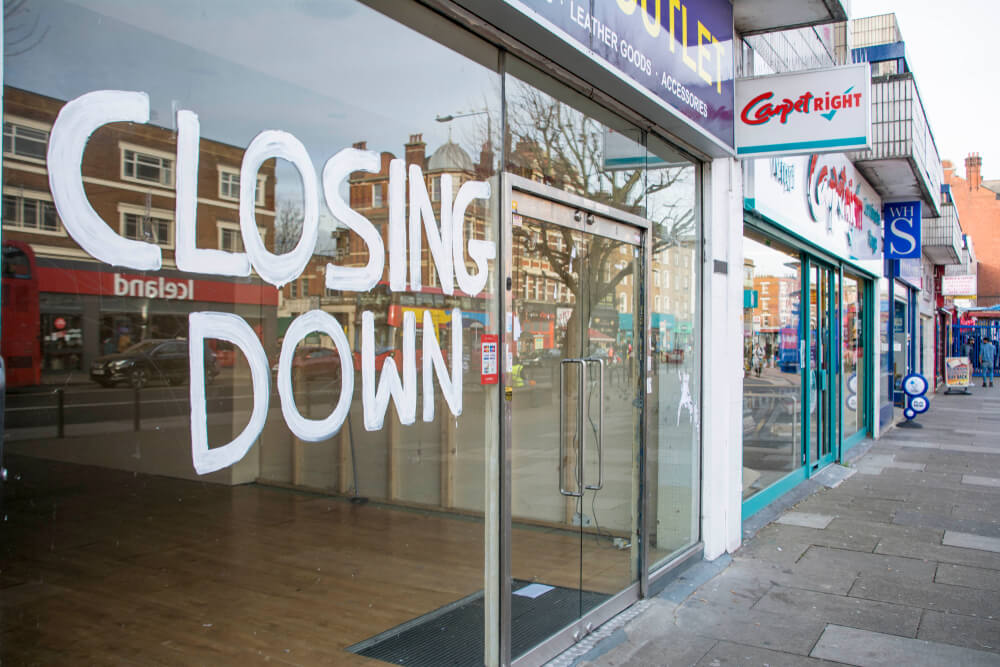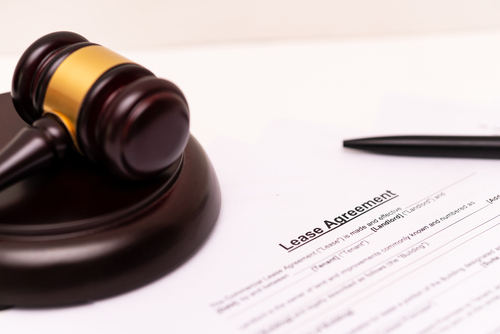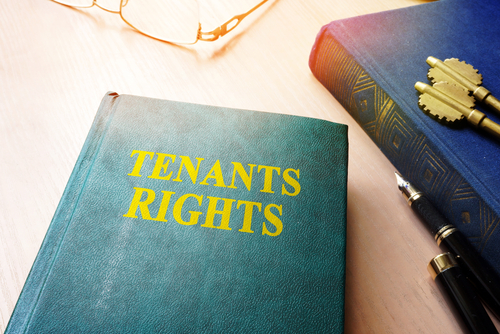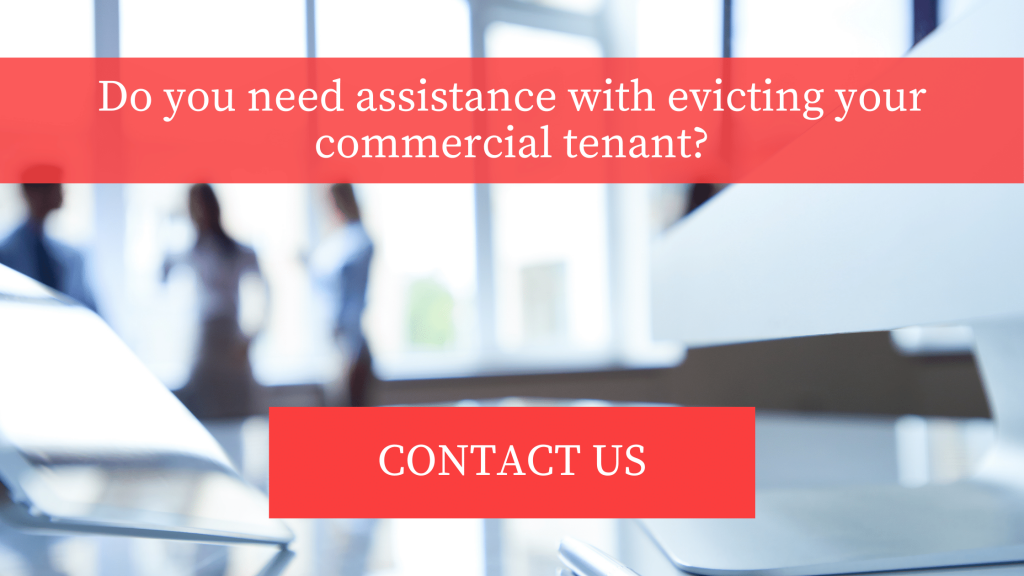As a landlord, getting the right tenant is always tricky. This can be even harder with commercial properties as these are used for business and rely on the business succeeding. While you always hope for the best, sometimes there are situations where you need to consider commercial tenant eviction. So if this is you, let’s take a look at the current process and things to understand when conducting an eviction.

What is a commercial tenant?
This is someone who has a commercial lease, the legally binding contract between the landlord and the business that occupies the property. The lease gives the business the right to use it for business or commercial purposes and usually lasts for a set period of time. The tenant pays the landlord the agreed rent while the lease also defines the different terms and conditions that apply to both parties.
Reasons to evict a tenant with a commercial lease
By far the most common reason that a landlord wants to evict this kind of tenant is non-payment of rent. Mostly this happens because the business is experiencing financial issues and isn’t raising enough money to pay their bills. While it is always best to try to reach an agreement to stop things from reaching the eviction stage, there are situations where all else has failed and the landlord must look at eviction.
Other reasons for eviction could be that the business has broken some terms of the lease, such as the type of business being carried out. It may even be a situation where there is illegal activity or there has been damage caused to the property.
How to evict a commercial tenant with a lease?
If the situation is where eviction is the only course of action left, then it is important to understand the steps and follow these closely to protect yourself from legal action from the tenant.
Claiming possession
The first step is to claim back possession of the property, which is known as forfeiture. You forfeit the lease using a specific clause to do this so you can show you have a legal reason for terminating the lease and evicting the tenant.
The right to forfeit can be handled in one of two ways:
- Peaceable re-entry – this is where they enter the premises and change the locks. It is considered the riskier option as the tenant count counter by applying for ‘relief from forfeiture’ and take back possession as well as a claim for compensation
- Applying to the court for possession – this is the better route but there are costs and time scales involved which is why all other routes such as an agreement about rent payments is always used first
The reason for eviction plays a part in the way the process is handled.
With non-payment of rent, you don’t need to give notice of intention to forfeit but can enter the premises. However you must not acknowledge the contingence of the tenancy – in other words, you can’t mention overdue rent or money owed. Notice of repossession should be left on the door and you should have a witness with you such as a solicitor or a locksmith.
For a breach of other terms of the tenancy agreement, you’ll need to use a section 146 notice to take possession. This must be served by a solicitor to all interested parties and needs to specify the nature of the breach, if there is a remedial action requirement and the time or payment for compensation required.
This may help with the actual eviction but the other big issue is the recovery of rent not paid. This is where the CRAR process comes in.
Commercial Rent Arrears Recovery (CRAR)
Under the Commercial Rent Arrears Recovery (CRAR), commercial landlords can recover rent arrears by taking goods from the tenant and selling them. It started on 6 April 2014 and applies to all new and existing leases from that date.
However, it doesn’t apply to every situation. There are three main stipulations to use the CRAR process:
- It only applies to premises that are completely commercial in purpose and contain no mixed use or residential elements such as an apartment above a shop
- It can only be used to recover principal rent, not other things like service charges or insurance premiums
- It can only be carried by Certified Enforcement Agents and following the statutory procedure.
CRAR only applies if there are more than 7 days of rent outstanding and a notice of enforcement containing the required information is given at least 7 days before any goods are taken. There are other terms that need to be met including a time limit for seizing goods and that only certain types of goods can be taken but a Certified Enforcement Agent will help with this.
The process cannot be used if the tenancy has come to an end or if there’s any uncertainty over the sum of rent due.

How to evict a commercial tenant without a lease?
It is always best to have a lease in place with any commercial customer but if you find yourself as a landlord with a commercial tenant and no lease, then you can evict the tenant without any legal process.
However, it is still worth checking with a solicitor to ensure you follow any guidelines and cover yourself to protect against legal comeback when doing this.
How long does a commercial tenant eviction take?
There are lots of factors that go into how long the process takes so it is impossible to give figures. However, some cases can take around 6 weeks from the eviction order while others can take 6 months or longer.
What rights does a commercial tenant have?
You also need to be aware of the tenant’s rights when it comes to looking at a commercial eviction process.
For example, under the Landlord and Tenant Act 1954, there is the Security of Tenure to anyone in a business property that continues after the end of a lease period unless it is ended via one of the ways in the Act.
This is why it is always important to get legal advice and have the right people assist with the process, to avoid stepping on any legal issues that could cause you problems.
Can a landlord lock out a commercial tenant?
Under the ‘peaceable re-entry’ a landlord can change the locks on a property after a certain number of days without rent being paid. But as mentioned above, there are risks and issues involved with going down this route that may mean you would be better to consider the court proceedings route. This protects you from any repercussions from taking this step.
Get the best professional help
As experts in CRAR and as High Court Enforcement Officers, Able Investigations is the right choice for the professional help you need for the different stages of this kind of tenant eviction. We can help you to evict a tenant legally and correctly, ensuring you don’t face any legal issues afterwards and can move forward with your commercial property as you wish.
Contact us today if you are dealing with or considering an eviction to get expert help from the start.




Comments are closed.